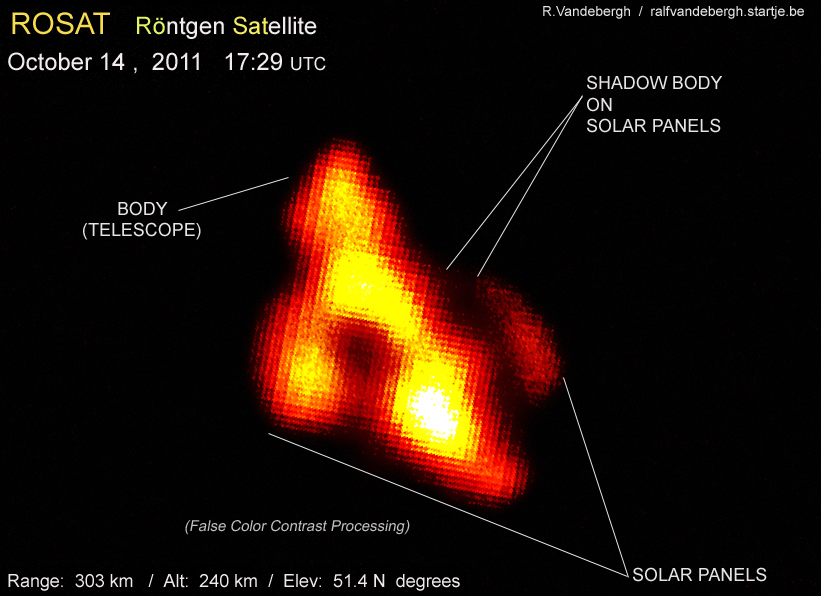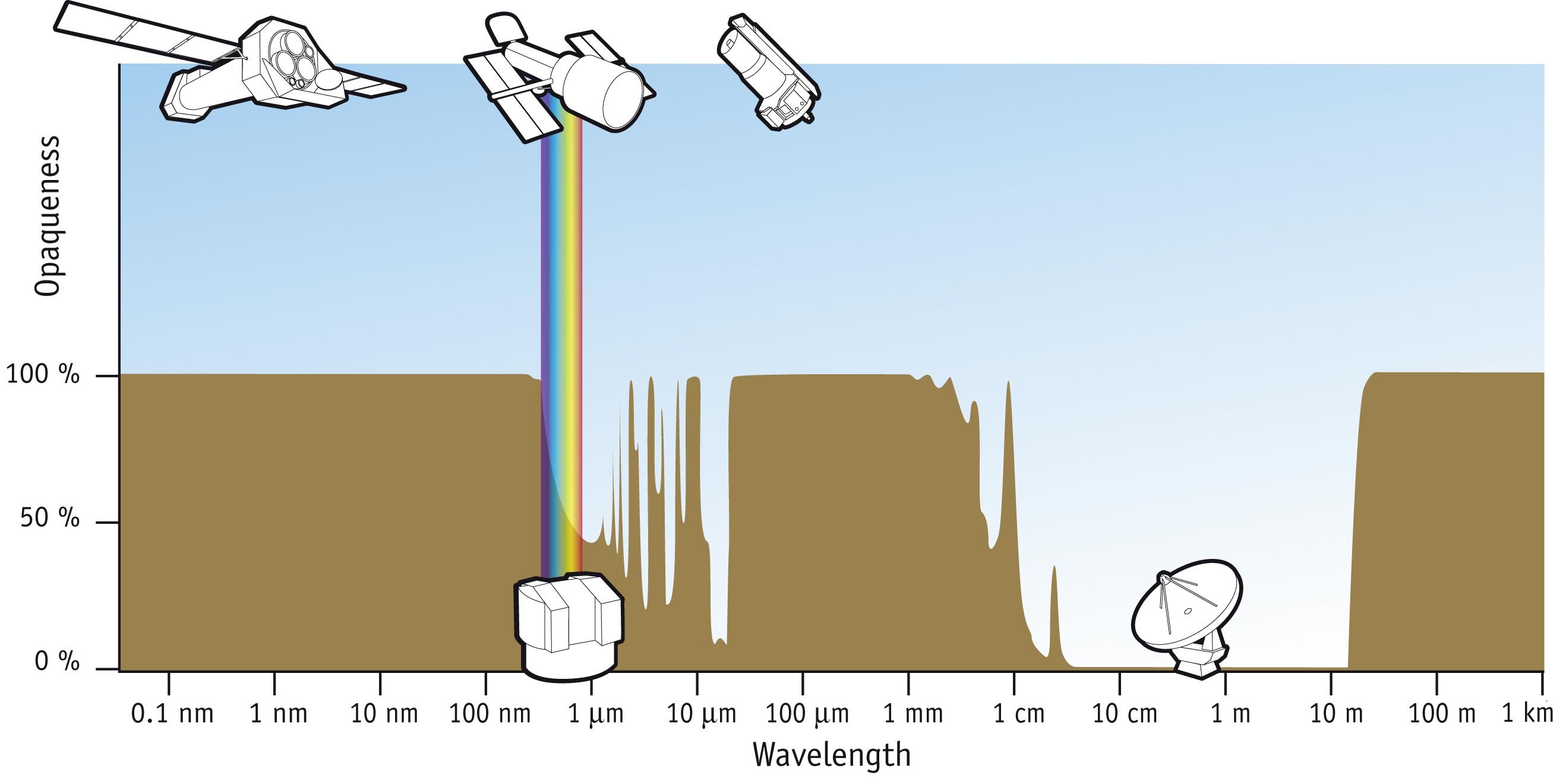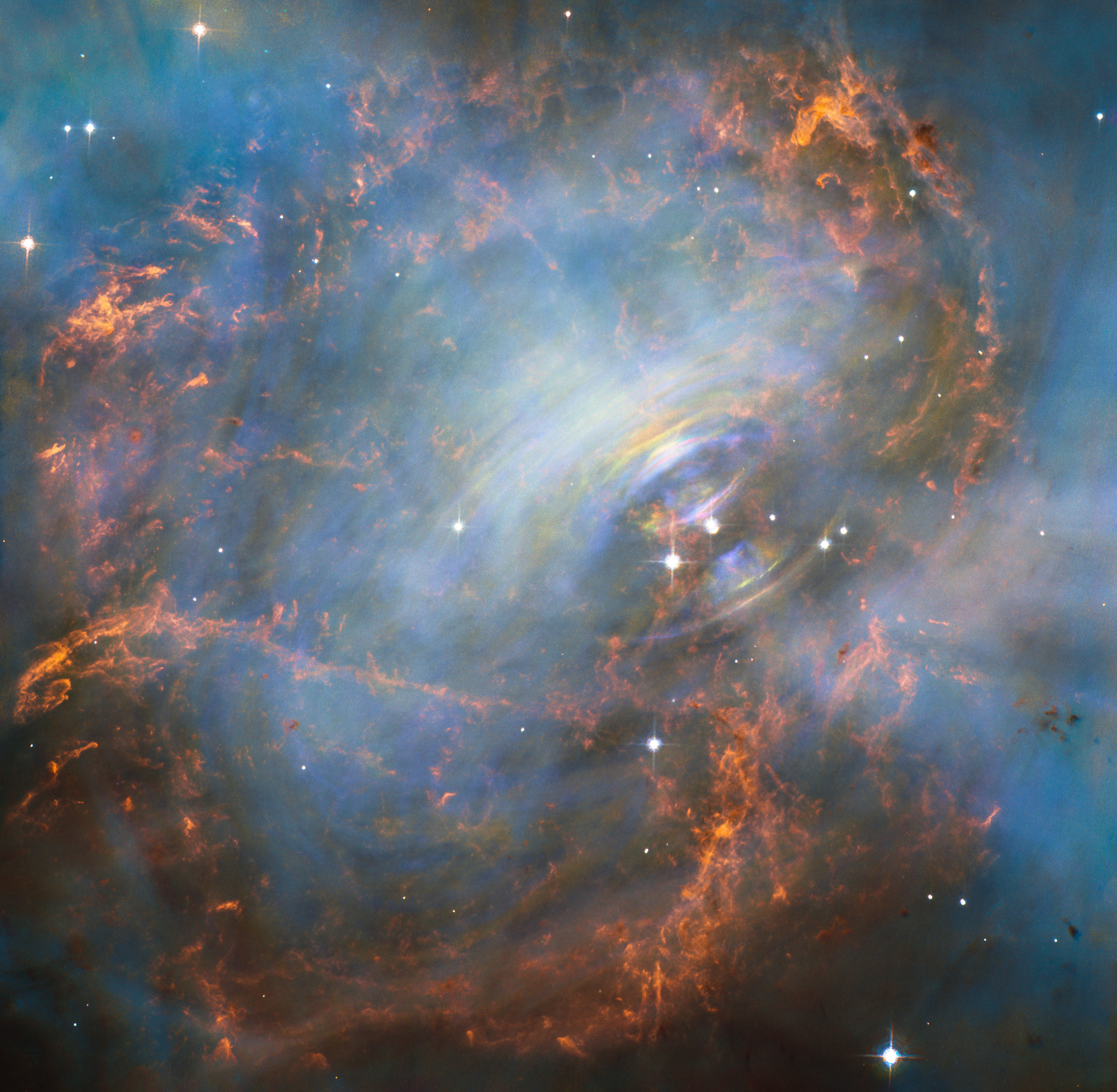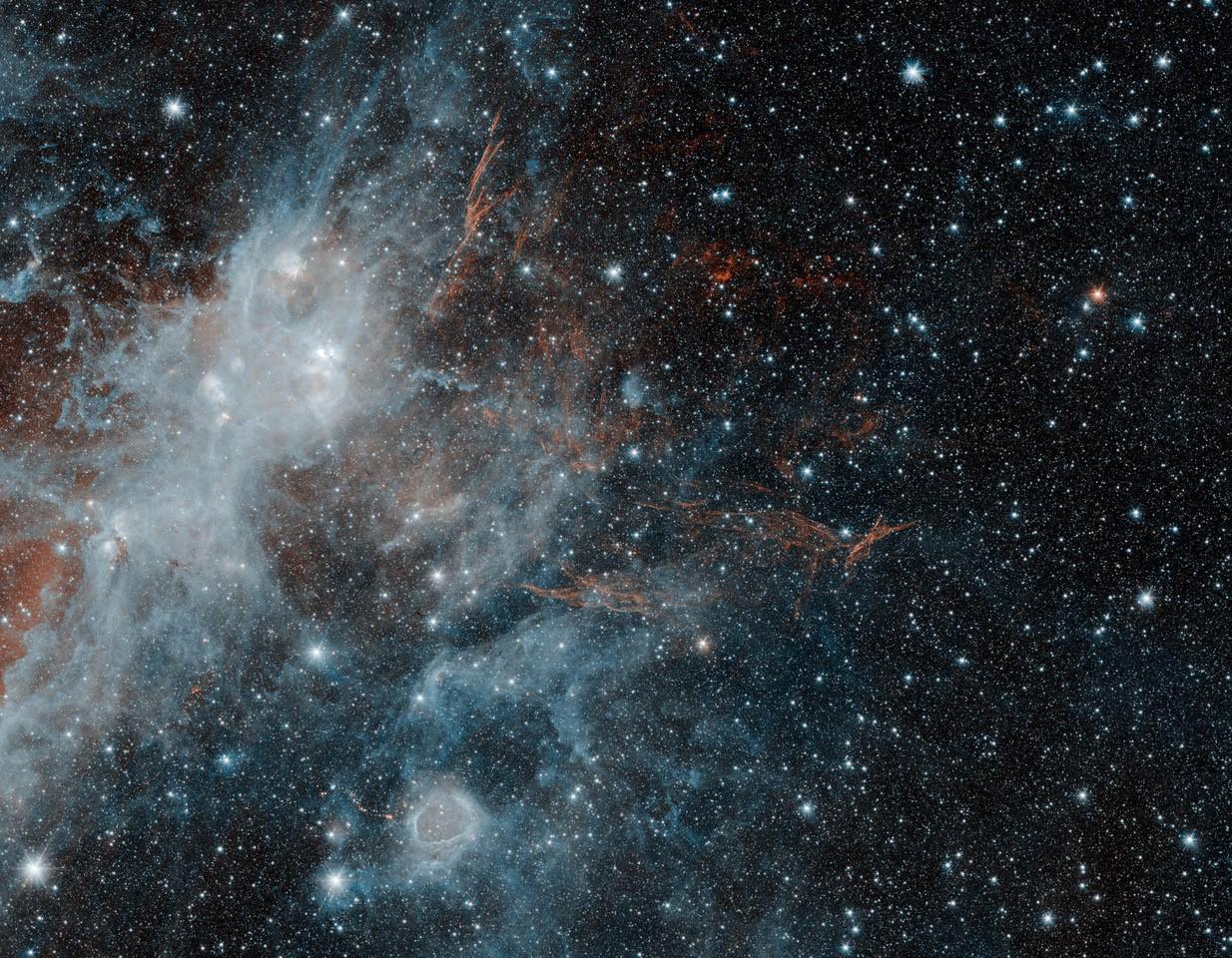|
Puppis A
Puppis A (Pup A) is a supernova remnant (SNR) about 100 light-years in diameter and roughly 6500–7000 light-years distant. Its apparent angular diameter is about 1 degree. The light of the supernova explosion reached Earth approximately 3700 years ago. Although it overlaps the Vela Supernova Remnant, it is four times more distant. A hypervelocity neutron star known as the Cosmic Cannonball has been found in this SNR. Puppis X-1 Puppis X-1 (Puppis A) was discovered by a Skylark flight in October 1971, viewed for 1 min with an accuracy ≥ 2 arcsec, probably at 1M 0821-426, with Puppis A ( RA 08h 23m 08.16s Dec -42° 41′ 41.40″) as the likely visual counterpart. Puppis A is one of the brightest X-ray sources in the X-ray sky. Its X-ray designation is 2U 0821-42. Gallery Image:Puppis labeled.jpg, wide-field composite view of the supernova remnant Puppis A (X-rays from ROSAT ROSAT (short for Röntgensatellit; in German X-rays are called Röntgenstrahlen, in honour ... [...More Info...] [...Related Items...] OR: [Wikipedia] [Google] [Baidu] |
Chandra X-ray Observatory
The Chandra X-ray Observatory (CXO), previously known as the Advanced X-ray Astrophysics Facility (AXAF), is a Flagship-class space telescope launched aboard the during STS-93 by NASA on July 23, 1999. Chandra is sensitive to X-ray sources 100 times fainter than any previous X-ray telescope, enabled by the high angular resolution of its mirrors. Since the Earth's atmosphere absorbs the vast majority of X-rays, they are not detectable from Earth-based telescopes; therefore space-based telescopes are required to make these observations. Chandra is an Earth satellite in a 64-hour orbit, and its mission is ongoing . Chandra is one of the Great Observatories, along with the Hubble Space Telescope, Compton Gamma Ray Observatory (1991–2000), and the Spitzer Space Telescope (2003–2020). The telescope is named after the Nobel Prize-winning Indian-American astrophysicist Subrahmanyan Chandrasekhar. Its mission is similar to that of ESA's XMM-Newton spacecraft, also launched in ... [...More Info...] [...Related Items...] OR: [Wikipedia] [Google] [Baidu] |
Light-years
A light-year, alternatively spelled light year (ly or lyr), is a unit of length used to express astronomical distances and is equal to exactly , which is approximately 9.46 trillion km or 5.88 trillion mi. As defined by the International Astronomical Union (IAU), a light-year is the distance that light travels in vacuum in one Julian year (365.25 days). Despite its inclusion of the word "year", the term should not be misinterpreted as a unit of time. The ''light-year'' is most often used when expressing distances to stars and other distances on a galactic scale, especially in non-specialist contexts and popular science publications. The unit most commonly used in professional astronomy is the parsec (symbol: pc, about 3.26 light-years). Definitions As defined by the International Astronomical Union (IAU), the light-year is the product of the Julian year (365.25 days, as opposed to the 365.2425-day Gregorian year or the 365.24219-day Tropical year that both approximate) ... [...More Info...] [...Related Items...] OR: [Wikipedia] [Google] [Baidu] |
List Of Supernova Remnants
This is a list of observed supernova remnants (SNRs) in the Milky Way, as well as galaxies nearby enough to resolve individual nebulae, such as the Large and Small Magellanic Clouds and the Andromeda Galaxy and some nearby galaxies. Supernova remnants typically only survive for a few tens of thousands of years, making all known SNRs fairly young compared to many other astronomical objects. See also *List of supernovae *Supernova *Lists of astronomical objects References External linksList of all known (extra)galactic supernova remnants aThe Open Supernova Catalog. {{DEFAULTSORT:List Of Supernova Remnants Supernova Remnants
[...More Info...] [...Related Items...] OR: [Wikipedia] [Google] [Baidu] |
ROSAT
ROSAT (short for Röntgensatellit; in German X-rays are called Röntgenstrahlen, in honour of Wilhelm Röntgen) was a German Aerospace Center-led satellite X-ray telescope, with instruments built by West Germany, the United Kingdom and the United States. It was launched on 1 June 1990, on a Delta II rocket from Cape Canaveral, on what was initially designed as an 18-month mission, with provision for up to five years of operation. ROSAT operated for over eight years, finally shutting down on 12 February 1999. In February 2011, it was reported that the satellite was unlikely to burn up entirely while re-entering the Earth's atmosphere due to the large amount of ceramics and glass used in construction. Parts as heavy as could impact the surface. ROSAT eventually re-entered the Earth's atmosphere on 23 October 2011 over the Bay of Bengal. Overview The Roentgensatellit (ROSAT) was a joint German, U.S. and British X-ray astrophysics project. ROSAT carried a German-built imagi ... [...More Info...] [...Related Items...] OR: [Wikipedia] [Google] [Baidu] |
Astronomical X-ray Sources
Astrophysical X-ray sources are astronomical objects with physical properties which result in the emission of X-rays. Several types of astrophysical objects emit X-rays. They include galaxy clusters, black holes in active galactic nucleus, active galactic nuclei (AGN), galactic objects such as supernova remnants, stars, and binary stars containing a white dwarf (cataclysmic variable stars and super soft X-ray sources), neutron star or black hole (X-ray binaries). Some Solar System bodies emit X-rays, the most notable being the Moon, although most of the X-ray brightness of the Moon arises from reflected solar X-rays. Furthermore, celestial entities in space are discussed as celestial X-ray sources. The origin of all observed astronomical X-ray sources is in, near to, or associated with a coronal cloud or gas at coronal cloud temperatures for however long or brief a period. A combination of many unresolved X-ray sources is thought to produce the observed X-ray background. The X ... [...More Info...] [...Related Items...] OR: [Wikipedia] [Google] [Baidu] |
Skylark (rocket)
Skylark was a family of British sounding rockets. It was operational between 1957 and 2005. Development of the Skylark begun during the early 1950s at the Royal Aircraft Establishment (RAE), which approached the Royal Society with an offer for it to carry scientific experiments. During early 1955, the British government agreed to provide £100,000 to support the programme's operations for four years. Development of the Skylark, initially known as the ''CTV.5 Series 3'', was pursued at a rapid pace, with hopes that initial launches could take place during the latter half of 1956. On 7 April 1956, the existence of the Skylark rocket was publicly revealed under the early name of ''Gassiot vehicle''. Launch facilities were established at the existing Woomera missile range in Australia; the Skylarks were produced in Britain and flown to Australia for final assembly, testing, and launching. The Skylark was first launched on 13 February 1957; the first scientific mission occurred d ... [...More Info...] [...Related Items...] OR: [Wikipedia] [Google] [Baidu] |
Neutron Star
A neutron star is the gravitationally collapsed Stellar core, core of a massive supergiant star. It results from the supernova explosion of a stellar evolution#Massive star, massive star—combined with gravitational collapse—that compresses the core past white dwarf star density to that of Atomic nucleus, atomic nuclei. Surpassed only by black holes, neutron stars are the second smallest and densest known class of stellar objects. Neutron stars have a radius on the order of and a mass of about . Stars that collapse into neutron stars have a total mass of between 10 and 25 solar masses (), or possibly more for those that are especially rich in Metallicity, elements heavier than hydrogen and helium. Once formed, neutron stars no longer actively generate heat and cool over time, but they may still evolve further through Stellar collision, collisions or Accretion (astrophysics), accretion. Most of the basic models for these objects imply that they are composed almost entirely o ... [...More Info...] [...Related Items...] OR: [Wikipedia] [Google] [Baidu] |
Vela Supernova Remnant
__NOTOC__ The Vela supernova remnant is a supernova remnant in the southern constellation Vela. Its source Type II supernova exploded approximately 11,000 years ago (and was about 900 light-years away). The association of the Vela supernova remnant with the Vela pulsar, made by astronomers at the University of Sydney in 1968, was direct observational evidence that supernovae form neutron stars. The Vela supernova remnant includes NGC 2736. Viewed from Earth, the Vela supernova remnant overlaps the Puppis A supernova remnant, which is four times more distant. Both the Puppis and Vela remnants are among the largest and brightest features in the X-ray sky. The Vela supernova remnant is one of the closest known to us. The Geminga pulsar A pulsar (''pulsating star, on the model of quasar'') is a highly magnetized rotating neutron star that emits beams of electromagnetic radiation out of its Poles of astronomical bodies#Magnetic poles, magnetic poles. This radiation can be ... [...More Info...] [...Related Items...] OR: [Wikipedia] [Google] [Baidu] |
Supernova Remnant
A supernova remnant (SNR) is the structure resulting from the explosion of a star in a supernova. The supernova remnant is bounded by an expanding shock wave, and consists of ejected material expanding from the explosion, and the interstellar material it sweeps up and shocks along the way. There are two common routes to a supernova: either a massive star may run out of fuel, ceasing to generate fusion energy in its core, and collapsing inward under the force of its own gravity to form a neutron star or a black hole; or a white dwarf star may accrete material from a companion star until it reaches a critical mass and undergoes a thermonuclear explosion. In either case, the resulting supernova explosion expels much or all of the stellar material with velocities as much as 10% the speed of light (or approximately 30,000 km/s) and a strong shock wave forms ahead of the ejecta. That heats the upstream plasma up to temperatures well above millions of K. The shock continuou ... [...More Info...] [...Related Items...] OR: [Wikipedia] [Google] [Baidu] |
Right Ascension
Right ascension (abbreviated RA; symbol ) is the angular distance of a particular point measured eastward along the celestial equator from the Sun at the equinox (celestial coordinates), March equinox to the (hour circle of the) point in question above the Earth. When paired with declination, these celestial coordinate system, astronomical coordinates specify the location of a point on the celestial sphere in the equatorial coordinate system. An old term, ''right ascension'' (), "''Ascensio recta'' Solis, stellæ, aut alterius cujusdam signi, est gradus æquatorus cum quo simul exoritur in sphæra recta"; roughly translated, "''Right ascension'' of the Sun, stars, or any other sign, is the degree of the equator that rises together in a right sphere" refers to the ''ascension'', or the point on the celestial equator that rises with any celestial object as seen from Earth's equator, where the celestial equator perpendicular, intersects the horizon at a right angle. It contrasts wi ... [...More Info...] [...Related Items...] OR: [Wikipedia] [Google] [Baidu] |
RX J0822-4300
Rx or most commonly refers to a medical prescription. RX, Rx, , or rx may also refer to: Arts and entertainment * ' or ''Rx'', a novel by Elizabeth J. Braswell writing as Tracy Lynn * Rx (band), an industrial rock band * ''Rx'', a 2016 album by Ryan Beaver * ''Rx'', a 2024 album by Galantis * " Rx (Medicate)", a song by Canadian rock band Theory of a Deadman * "rX" (''The Gifted''), an episode of the television series ''The Gifted'' * '' Kamen Rider Black RX'', a Japanese superhero television series * ''Rx'' (film), a 2005 romantic thriller film Science and technology Computing and electronics * Rx (receive, receiver or reception), in various telecommunications applications ** Rx, the receive signal in the RS-232 serial communication standard * Rx, the remote procedure call mechanism used by the Andrew File System * RX, the audio repair software by iZotope * Radeon RX series, a series of graphics products in the AMD Radeon 400 series * Reactive extensions, originally for .N ... [...More Info...] [...Related Items...] OR: [Wikipedia] [Google] [Baidu] |
Central Compact Object
A central compact object (CCO) is an x-ray source found near the center of a young, nearby supernova remnant (SNR). Given the observed x-ray flux and spectra observed from these objects, the almost certain conclusion is that CCOs are the remnant neutron stars which resulted from the recent supernova. Unlike most pulsars, CCOs generally lack pulsed radio emission or variation in the observed x-rays due to such phenomena being either nonexistent or difficult to detect. The weaker magnetic fields than most other detected neutron stars means that most of the detected x-rays are due to blackbody radiation. Confirmation that the CCO is associated with the past supernova can be done using the kinematics of the objects and matching them to the age and kinematics of the host SNR. The detection in 1980 of 1E 161348-5055 at the center of SNR RCW 103 using the Einstein Observatory was once touted as the first CCO discovery, but is now classified as a slow-rotating magnetar due to magnetar o ... [...More Info...] [...Related Items...] OR: [Wikipedia] [Google] [Baidu] |







